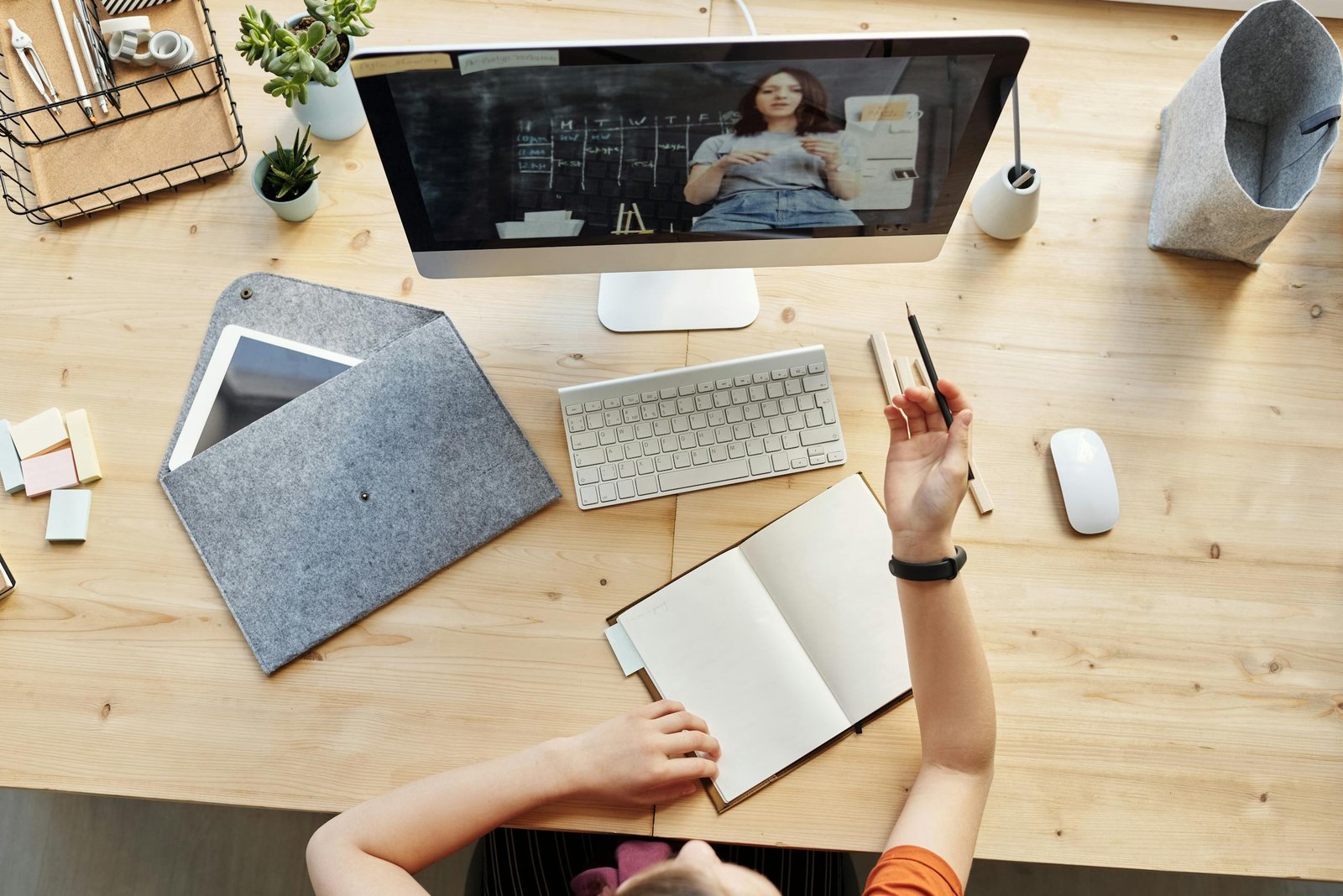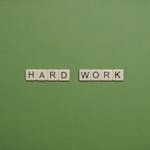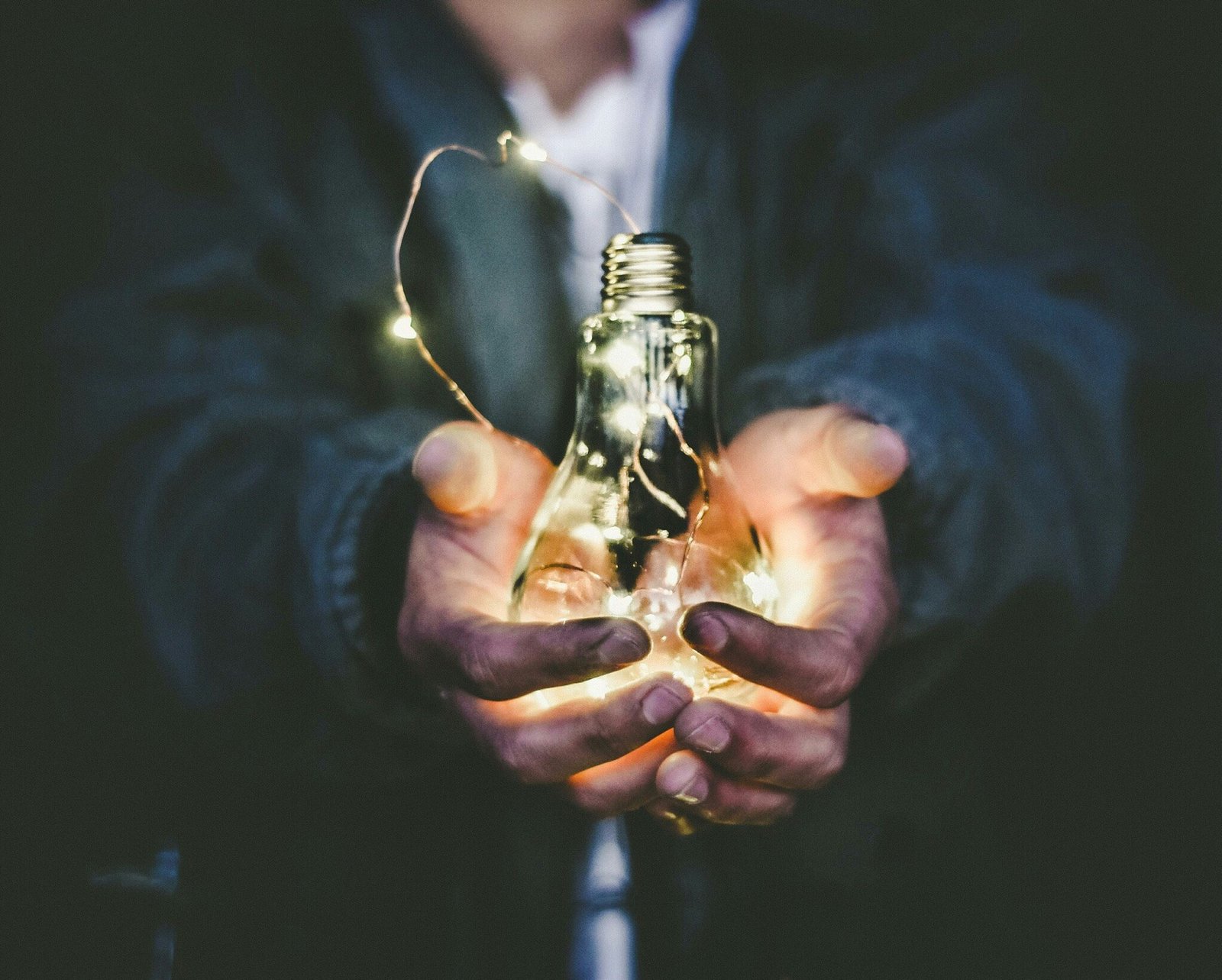Introduction: Understanding Workplace Distractions
In today’s rapidly evolving work environment, maintaining concentration and effectiveness has become increasingly challenging. Workplace distractions are an ever-present issue, significantly impacting productivity and mental well-being. According to a study by Udemy, nearly 70% of employees admit feeling distracted while at work, with a substantial 16% stating that they almost always feel this way. These interruptions not only hinder individual performance but also have broader implications for organizational efficiency.
Common sources of workplace distractions include digital notifications, such as emails and instant messaging alerts, as well as physical interruptions like noisy colleagues and impromptu meetings. Statistical data from an Oxford Economics study indicates that 53% of employees report conversational noise as a prime distractor, underscoring the persistent challenge of noise pollution in open-plan office settings.
The impact of workplace distractions extends beyond mere inconvenience. Research published in the Journal of Experimental Psychology reveals that even short interruptions can significantly increase the time required to complete a task, by as much as 25%. This inefficiency translates into tangible economic losses for organizations. According to a Basex research study, workplace interruptions cost the U.S. economy nearly $588 billion annually in lost productivity.
Moreover, frequent distractions correlate with increased stress levels and reduced job satisfaction among employees. A study conducted by the American Psychological Association notes that employees who experience high levels of distraction are more likely to report feelings of burnout and decreased job fulfillment. This emotional toll further exacerbates retention issues, with a disengaged workforce more inclined to seek employment elsewhere.
Given these statistics, it becomes apparent that understanding and mitigating workplace distractions are critical for fostering a productive and mentally healthy work environment. By addressing these concerns, both employees and organizations can benefit from enhanced performance, greater job satisfaction, and overall improved workplace dynamics.
Identifying Your Personal Distractions
In any workplace, distractions can significantly hamper productivity. Identifying your personal distractions is the first step towards mitigating their effects. Common examples of distractions include social media, noisy co-workers, and cluttered workspaces. By recognizing these, employees can start addressing them systematically.
Social media is often a significant source of distraction. With continuous notifications and the temptation to check updates, it can easily divert attention from tasks at hand. Noisy co-workers or an overly loud office environment can also be quite disruptive. For some, a cluttered workspace can lead to inefficiency and an inability to concentrate. Examining how these elements affect your focus is crucial to enhancing productivity.
An effective method to uncover your main sources of distraction is to keep a distraction diary. Over a week, take note every time you get sidetracked. Record the time, what distracted you, and how long you were off task. This process provides detailed insights into patterns of distraction, revealing which elements most frequently interrupt your workflow.
Alternatively, utilizing apps designed to monitor screen time can be immensely beneficial. These tools provide data on how much time you spend on various applications and websites. By analyzing this data, you can identify and reduce periods spent on non-essential activities, thereby improving productivity. Some popular screen-monitoring apps include RescueTime, Moment, and StayFocusd.
Addressing physical clutter is another important step. A cluttered workspace can create mental noise and overwhelm, making it difficult to concentrate. Regularly organizing your desk and ensuring that only necessary items are within reach can significantly enhance focus and efficiency.
Identifying your personal distractions involves self-awareness and a willingness to critically evaluate your habits and environment. By understanding what disrupts your productivity, you can take actionable steps to create a more focused and effective work atmosphere.
Creating a Distraction-Free Workspace
In today’s dynamic work environment, maintaining focus can be a challenging endeavor. A pivotal element in cultivating concentration is establishing a distraction-free workspace. An organized workspace serves not only to please the eye but also significantly reduces the likelihood of interruptions. A cluttered desk, for example, can divert attention, causing a decline in productivity.
Ergonomic design principles are essential in creating a workspace that promotes sustained attention. Ergonomics involves arranging your workstation to fit the user’s needs, thereby minimizing physical strain and optimizing comfort. This includes adjusting the chair height so that feet rest flat on the floor, ensuring that desk height allows for forearms to be parallel to the ground, and positioning computer screens at eye level to avoid neck strain. Such ergonomic considerations can enhance focus by enabling the worker to be physically comfortable, thereby reducing the chances of distraction induced by discomfort.
Decluttering techniques are another critical aspect of organizing a distraction-free workspace. Begin by sorting items into categories: essentials, frequently used items, and non-essentials. Essentials should be within arm’s reach, frequently used items should be stored nearby, and non-essentials should be kept out of sight. Implementing storage solutions such as drawers, shelves, and organizers can simplify this process. By maintaining a clear and orderly desk, the visual noise is minimized, which can reduce cognitive overload and keep your mind centered on the task at hand.
Personalized items can also play a role in inspiring productivity, provided they are used judiciously. A few motivational quotes, a family photo, or a plant can make the workspace feel more welcoming and personal, yet it’s imperative not to overdo it. Too many personal items can become distractions themselves and undermine the quest for a focused workspace. Select these items carefully to ensure they contribute positively to the atmosphere and do not clutter the environment.
By implementing these actionable steps, you can transform your workspace into an oasis of focus and productivity amidst a sea of distractions. Ergonomically customizing your workstation, committing to decluttering techniques, and thoughtfully incorporating personalized items can collectively create a conducive environment for maintaining concentration and achieving your professional goals.
Establishing a Routine and Setting Boundaries
In today’s fast-paced work environments, establishing a routine is paramount for maintaining focus and productivity. Structured work hours create a reliable framework that allows individuals to allocate time effectively. By dedicating specific times of the day to various tasks, employees can optimize their output, minimize procrastination, and avoid becoming overwhelmed. A consistent schedule not only aids in staying disciplined but also strikes a balance between work responsibilities and personal life.
Regular breaks are an integral part of a productive workday. They prevent burnout, improve mental clarity, and boost efficiency. Techniques like the Pomodoro method emphasize the importance of periodic pauses. In this technique, tasks are broken down into 25-minute intervals, separated by 5-minute breaks. This rhythm of work and rest can enhance concentration and maintain high levels of productivity throughout the day.
Equally crucial is the ability to set clear boundaries with colleagues to minimize interruptions. Respecting each other’s designated work hours and minimizing non-essential interactions can create an environment conducive to focused work. It’s essential to communicate availability clearly, whether through shared calendars or other productivity tools, to ensure that colleagues are aware of when it is appropriate to engage in discussions. Implementing “do not disturb” signals or utilizing message statuses can also help manage social interactions effectively.
In addition to external boundaries, self-imposed limits play a vital role in staying productive. This includes setting goals and defining milestones to create a sense of direction and accomplishment. By organizing tasks based on priority and complexity, individuals can tackle more demanding activities when they are most alert and attentive.
Overall, the combination of a structured routine, regular breaks, and clear boundaries forms the backbone of a focused and productive work environment. These practices help manage energy levels, sustain motivation, and foster a culture of respect and efficiency within the workplace.
Utilizing Technology to Enhance Focus
In an era where distractions abound, leveraging technology can be a game-changer for maintaining concentration and productivity. Numerous tools and applications are specifically designed to help individuals manage their time more effectively and reduce interruptions that hinder workflow.
One of the most effective categories of productivity tools is task managers. Applications such as Asana, Trello, and Todoist offer robust platforms for organizing tasks, setting deadlines, and prioritizing activities. They enable users to break down larger projects into manageable tasks, allocate time efficiently, and track progress in a visually appealing and accessible manner.
Another valuable technological ally in fostering focus is background noise apps. For individuals who find themselves easily distracted in noisy environments, apps like Noisli, Brain.fm, and Calm can be instrumental. These applications provide a variety of soundscapes, from white noise to nature sounds, designed to mask disruptive background noise and create an atmosphere conducive to concentration and deep work.
Website blockers are another essential technological aid. Tools such as Cold Turkey, Freedom, and StayFocusd can be set up to block access to distracting websites and applications during designated work periods. This empowers users to dedicate uninterrupted time to their tasks, significantly enhancing productivity by minimizing digital distractions.
In addition to these, consider integrating focus-enhancing apps like Focus@Will, which combines neuroscience and music to provide tracks that enhance productivity. These apps utilize scientifically engineered music to help users stay engaged and maintain cognitive flow while working.
For optimal results, it might be beneficial to combine multiple tools to create a customized productivity system that suits individual work habits and preferences. By leveraging the right technological aids, one can create an environment that supports concentration and boosts overall productivity.
Mindfulness and Stress Management Techniques
In a distracting workplace, mindfulness and stress management are vital for maintaining both focus and productivity. By incorporating mindfulness practices, individuals can achieve a heightened state of awareness, allowing them to concentrate on the tasks at hand without being easily diverted. One effective method is deep breathing exercises, which can be implemented at any time during the workday. Simple techniques, such as inhaling deeply through the nose, holding the breath for a few seconds, and exhaling slowly through the mouth, can significantly alleviate stress and refocus the mind.
Meditation is another powerful tool that serves as a cornerstone of mindfulness. Regular meditation sessions, even as brief as five to ten minutes, can lead to a reduction in stress levels and an increase in mental clarity. Guided meditation apps or timers can be useful aids for beginners seeking to integrate this practice into their daily routine. Setting aside specific times for meditation, such as before starting work or during lunch breaks, can foster a consistent habit that reinforces overall concentration.
Mindfulness practices extend beyond formal meditation. Techniques like body scanning help individuals become aware of physical sensations and tension, which can be addressed to improve comfort and focus. Moreover, incorporating short mindfulness breaks throughout the day—moments to pause and engage in observational awareness activities—can reset and refresh the mind.
Additionally, stress management methods such as visualization and progressive muscle relaxation provide alternatives for those who might seek diverse approaches. Visualization entails imagining calming scenes that induce relaxation, while progressive muscle relaxation involves tensing and then gradually releasing muscle groups, reducing physical stress symptoms.
To successfully integrate these mindfulness and stress management techniques, consider dedicating certain intervals during the day specifically for these practices. Employing reminders, such as calendar notifications or alarms, can help to establish and maintain consistency. Through the inclusion of these methods, individuals can foster a work environment that is less susceptible to distractions and more conducive to sustained productivity and focus.
Collaborating with Co-Workers on Staying Focused
Team dynamics play a critical role in maintaining focus and productivity in a distracting workplace. Collaborating effectively with co-workers starts with acknowledging the collective goal of minimizing distractions to improve overall performance. Implementing structured strategies can help cultivate a culture of concentration within the team.
One effective strategy is establishing ‘focus time’ periods. During these designated times, team members should commit to uninterrupted work, signaling to others that they prefer not to be disturbed. This practice not only respects individual work rhythms but also synchronizes collective efforts towards achieving higher productivity. Furthermore, technological tools like calendar blockers or silent communication platforms can be utilized to reinforce ‘focus time’ commitments across the team.
Creating distraction-free zones within the office environment is another crucial element. These zones should be designated areas where conversations, phone calls, and non-work-related interactions are limited. By setting up such spaces, teams can offer a refuge where employees can concentrate without the usual workplace noise and interruptions. Implementing physical barriers, acoustic panels, or even noise-cancelling headphones can enhance these zones’ effectiveness.
Encouraging mutual respect for each other’s focused work time is also essential. Team members should be mindful of their colleagues’ need for concentration and avoid unnecessary interruptions. This can be facilitated by establishing clear communication protocols, such as using instant messaging for urgent matters only or scheduling meetings well in advance. Additionally, regular team discussions about productivity expectations and the challenges faced can help in aligning attitudes towards maintaining focus.
Supporting one another in minimizing distractions involves proactive collaboration. Team members can assist each other by reminding peers of their ‘focus time,’ sharing best practices, and holding each other accountable for maintaining a conducive work environment. Regularly reviewing these practices and being open to feedback can ensure that the team continually improves its ability to stay focused amidst distractions.
Evaluating and Adjusting Your Strategies Over Time
Staying focused and productive in a distracting workplace requires more than just implementing strategies; it demands regular evaluation and adjustment of these strategies to adapt to evolving circumstances. Periodic self-assessments are key in understanding what works and what doesn’t in your quest to maintain high productivity levels. Begin by setting aside regular intervals, such as monthly or quarterly, to reflect on the effectiveness of your current methods. Ask yourself critical questions about your productivity patterns, the functionality of your workspace, and your overall work satisfaction.
Feedback is another valuable tool in this ongoing process. Seek input from colleagues, supervisors, or even friends who understand your work dynamics. They can offer an external perspective, highlighting areas that may need improvement or reaffirming the success of certain strategies. Utilize this feedback constructively to fine-tune your approach and eliminate practices that might be undermining your focus.
Adaptability plays a crucial role in maintaining productivity in a changing work environment. As new challenges arise, whether due to technological advancements, team restructuring, or changes in project scope, be ready to pivot and adjust your strategies. Staying updated with new productivity tools and techniques is beneficial; what worked a year ago might not be as effective today.
Additionally, adopting a mindset of continuous improvement ensures that you don’t become complacent. Focused productivity isn’t a static goal but a dynamic process that requires constant nurturing. Embrace new learning opportunities, attend workshops, and read up-to-date resources about workplace productivity. By prioritizing continuous improvement, you will better equip yourself to handle distractions and maintain a high standard of work efficiency.
Incorporating these evaluation and adjustment measures into your routine helps in fostering a work environment where high productivity is sustainable, regardless of external distractions. Regularly reassessing your strategies ensures you remain focused, productive, and prepared to face any workplace challenge effectively.





